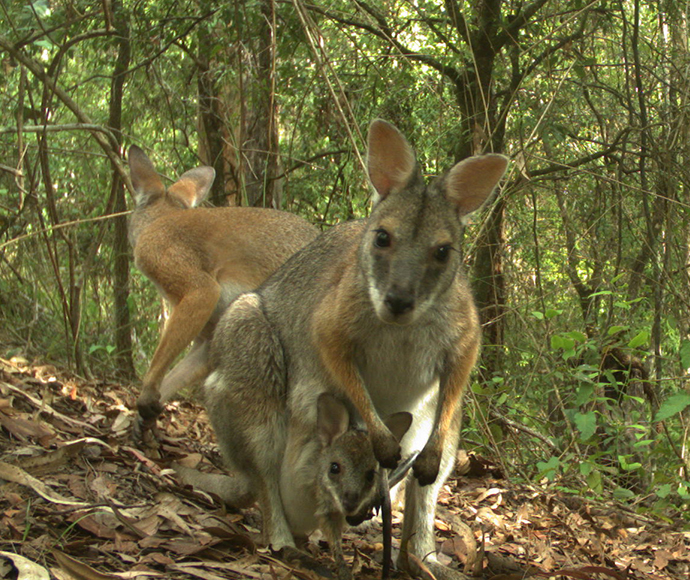NSW National Parks and Wildlife Service (NPWS) is on a mission to spot black-striped wallabies around northern NSW's Gondwana rainforests as part of a 10-year project.

NPWS North Coast Branch Team Leader Matthew Wiseman said sightings of the threatened species could lead to funding to help manage weeds, fences or predator-baiting.
"We're calling out to anyone living around Mallanganee, Richmond Range National Park, Hogarth Range, Bonalbo and Bungawalbin – all areas around World Heritage listed Gondwana rainforest – to tell us if they've seen any black-striped wallabies.
"If people keep an eye out and report sightings, we'll be able to better understand this threatened species' distribution, habitat and potential threats, so we can develop better long-term conservation outcomes.
"On private property where black-striped wallaby sightings are confirmed, funding may be available to help manage threats including weed work, fencing and baiting for predators."
The quest to spot the wallaby is part of the 10-year Burning Hotspots – Gondwana Threatened Species and Fire project which is funded through the NSW Environmental Trust's Saving our Species (SoS) Partnership Grant.
The black-striped wallaby is a small to medium-sized wallaby, grey-brown in colour with a narrow black stripe running down the centre of the back. It is smaller and more colourful than the more common red-necked wallaby, which has rust-red patches on the shoulders, arms and upper legs and prominent white cheek- and hip-stripes.
The black-striped wallaby is mostly associated with dry rainforest on the North Coast, but also lives in moist eucalypt forest with rainforest understorey or dense shrub layer.
The 10-year program is midway through, and partners include NSW National Parks & Wildlife Service in Richmond River Area working with Northern Rivers Fire and Biodiversity Consortium, DPIE Biodiversity and Conservation Division, Southern Cross University, University of NSW, Forestry Corporation and the Border Ranges Alliance.
Find out more about the conservation and recovery of the black-striped wallaby, or report sightings to [email protected].






